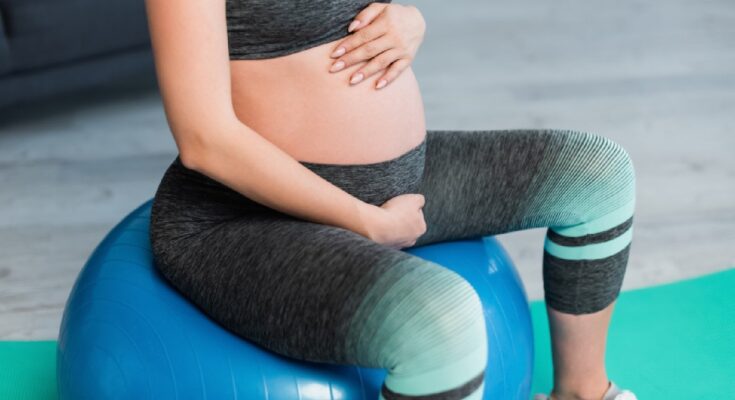Doing pelvic floor exercises is good for pregnant women as it helps strengthen the pelvic floor muscles and offer several other benefits. Here are the best exercises you can try!
Pelvic floor muscles are a group of muscles that support the bladder, uterus and the bowel. These muscles form a hammock which is attached to the pubic bone in front and tailbone at the back. So, the urethra, anus, and vagina pass through the pelvic floor. A strong pelvic floor helps to maintain bladder health and control bowel movements and it is also important for your sexual health. These muscles are also important for pregnant women as they have an impact on the growing baby. During childbirth, pelvic floor muscles are required to do an extra job by getting relaxed or by stretching to allow the baby to be born.
Is it important to exercise during pregnancy?
In pregnancy, there are a lot of hormonal changes which cause the muscles to soften and stretch more easily. These changes along with the weight of the growing baby put strain on the pelvic floor which can increase the chances of one suffering from bladder or bowel problems during pregnancy and after childbirth. Around 1 out of 3 women develop some form of incontinence after having a baby. But, if one is following proper pelvic floor strengthening exercises during and after pregnancy, they are less likely to turn to normalcy post-birth. Women should focus on pelvic muscle exercises not only during pregnancy or after birth but throughout their lives. These exercises are going to form an integral part of pregnancy, labour, and post-delivery. One of the best exercises that help strengthen the pelvic floor muscles are Kegel exercises.

How to do Kegel exercises to strengthen pelvic floor muscles?
To know how you can do pelvic floor exercises correctly, you should know where they are located. You can identify the pelvic floor muscles by trying to stop the flow of urine while emptying your bladder. If you can do it for a second or two, you are using the correct muscles.
As mentioned, Kegel exercises are one of the best exercises to strengthen your pelvic floor muscles. Here’s how you can perform it:
- Lie down on your back with your thigh, buttocks and stomach muscles relaxed.
- Now squeeze the muscles of the anus and back as if you are trying to stop passing the wind.
- Squeeze and hold these muscles and then relax.
- Make sure the buttocks are relaxed while you are breathing normally.
One can do Kegel exercises every day in any position like sitting or standing. Do it post urination and aim to do at least 3 sets of 8-10 squeezes with correct breathing.
When is the best time to do pelvic floor exercises during pregnancy?
During pregnancy, start doing these exercises as soon as you get to know that you are pregnant. Kegel exercises are the safest and most important exercises when you can start doing them from the first trimester and continue doing them throughout your lifetime. These exercises can be done at any time of the day. You can do it even if you are waiting at the traffic signal, boiling water, cooking, or watching TV.
What are the benefits of pelvic floor exercises for pregnant women?
1. Promotes a smooth pregnancy
Pelvic floor exercises when combined with core and back strengthening exercises helps you sail smoothly through pregnancy with no back pain or pelvic pain. One can use different props such as a ring or Pilates ball to help you get control over the pelvic floor. You can include these exercises in your routine dedicating 20 minutes for the same. For example: Doing Kegel with squats, Kegel with bridge or cat and camel pose etc. Consult a physiotherapist who will help you to do these exercises in correct posture and with the correct breathing pattern.
2. Improves blood circulation
Pelvic floor exercises are important post birth and can be done right from Day 1 or Day 2 of birth. These help you to improve blood circulation in the area and helps with faster recovery.

3. Helps you heal
Pelvic floor therapy can help with a lot of concerns post delivery such as the co-ordination of pelvic muscles and aid in proper healing. This can also address any pelvic organ prolapse resulting from birth and also help in addressing painful intercourse. Pelvic floor and deep abdominal muscles exercise will help you to return to your pre-pregnancy shape and assist with healing around the stitches too.
Pelvic floor exercises are beneficial for all the new mothers despite the mode of delivery as the pelvic floor gets weakened by 25 percent during pregnancy due to factors like producing a baby, widened uterus and body weight. If you’re new to these exercises or want help, consider consulting a Pelvic floor Physical Therapist. They can recommend you the specific exercises and ensure you’re doing them correctly.
Source link






